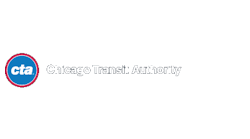Temporary changes to rail schedules on certain routes will allow the Chicago Transit Authority (CTA) to provide more reliable service; the authority reports in an update to its efforts to deliver on its post-pandemic “Meeting the Moment” transformation plan.
CTA says one of customers’ most frequent comments is the unpredictability of wait times. To address this, CTA wants to see its schedule optimization that aligns scheduled service with its available workforce, provides more consistent intervals between trains and reduces instances of large or inconsistent service gaps.
The rail schedule optimization changes took effect in mid-August on the Red, Blue, Orange, Purple and Brown lines. Trains that were scheduled, but that could not be covered due to staffing challenges, were removed and the remaining trains spaced out at more consistent intervals until additional personnel are available to operate the temporarily removed trains. CTA says it continues to pursue aggressive hiring strategies and notes scheduled rail service has had more even service throughout the day since schedule optimization was implemented.
The authority reports early results include a 64 percent drop in large service gaps on the Blue Line during weekday service and a 40 percent decrease in large gaps on the Red Line.
“These numbers show that trains are arriving on a more consistent, even basis—offering improved reliability, which is [something] customers have asked for and what we promised,” said CTA President Dorval R. Carter, Jr. “To be clear, this is just a start: We recognize there is more work to do. But we are moving in the right direction and will continue to make additional adjustments to continue to improve service. Our ultimate goal is to build back our workforce to provide all the transit service our customers deserve.”
A secondary and important benefit of these optimizations is improvement in Train Tracker accuracy, and it is anticipated that customers will see fewer instances of “ghost trains” on these optimized schedules. CTA continues to explore other improvements to Train Tracker to further enhance the reliability and accuracy of this critical tool.

Mischa Wanek-Libman | Group Editorial Director
Mischa Wanek-Libman is director of communications with Transdev North America. She has more than 20 years of experience working in the transportation industry covering construction projects, engineering challenges, transit and rail operations and best practices.
Wanek-Libman has held top editorial positions at freight rail and public transportation business-to-business publications including as editor-in-chief and editorial director of Mass Transit from 2018-2024. She has been recognized for editorial excellence through her individual work, as well as for collaborative content.
She is an active member of the American Public Transportation Association's Marketing and Communications Committee and served 14 years as a Board Observer on the National Railroad Construction and Maintenance Association (NRC) Board of Directors.
She is a graduate of Drake University in Des Moines, Iowa, where she earned a Bachelor of Arts degree in Journalism and Mass Communication.




